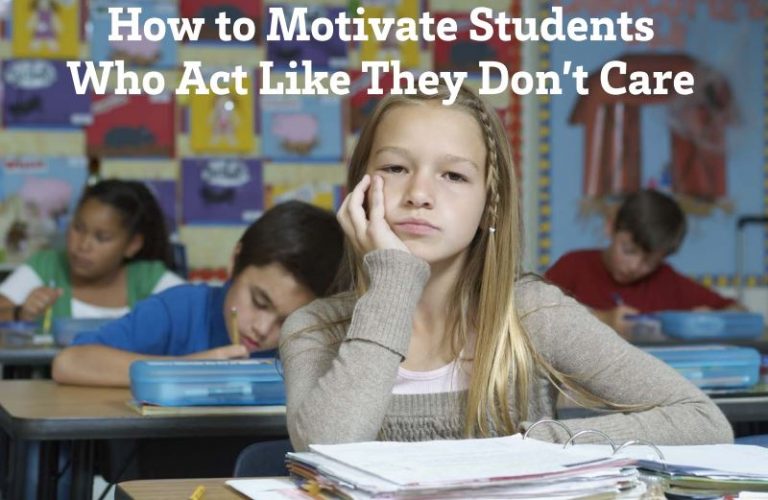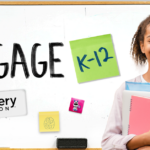By Dr. Allen N. Mendler, author of Motivating Students Who Don’t Care
Nobody is Born Unmotivated
Parents of toddlers know something is very wrong developmentally if they aren’t constantly chasing their tiny explorer all over the house, erecting barriers along the way to try and keep their little learner safe. It is the rare child who isn’t filled with enthusiasm when that first day of kindergarten arrives. Yet little by little, the excitement wanes until more than half of all students in grades 5-12 are reportedly either not engaged or actively disengaged in school.
Since it is natural for humans to want to learn and explore and if school is a place that facilitates learning and exploration, why do many students develop a negative attitude during their school careers, with some getting so disillusioned that they seem to not care at all? What happens to change the eager kindergartner into a cynical and disengaged teen? Can this downward spiral be prevented or reversed?
Post-Pandemic Challenges & Strategies
Poor student motivation and dealing with behavior problems has been at or near the top of classroom concerns expressed by educators throughout my forty plus year career. Since the desire to explore is intrinsically motivating, the challenge we face as educators is to identify and eliminate as many of the obstacles as we can that get in the way.
By far and away unfulfilled basic needs are at the core of virtually all behavior problems. Physical needs for food, shelter and safety are obvious. Psychological needs for attention, connection, competence, control and joy also seek fulfillment. When any of these needs are unsatisfied, some students act out; some become depressed or filled with anxiety; some give up.
Given the increase in child visits to emergency rooms during the pandemic for mental health issues, there is likely to be a corresponding uptick in challenging behaviors as students return to school. Literally overnight kids lost contact with their teachers, friends, playgrounds, celebrations, after-school activities and grandparents. Some had no respite from witnessing or experiencing some form of abuse. Several teachers expressed concerns about many virtual learners who either irregularly attended class or completely stopped coming.
Addressing our students’ heightened social-emotional needs, must be the top priority. As well, there are three other issues we explore that are often triggers for student disengagement followed by a few suggested strategies for addressing each.
Social Emotional Factors
Some students shut down to school because they feel disconnected and see being unproductive as a pathway towards acceptance. Others are focused on more basic needs like having a roof over their heads, getting enough to eat and/or feeling safe at home or in the neighborhood. Unless school becomes a welcome distraction from these concerns or provides support to cope with these out-of-school issues, there may be too little mental energy available to handle the challenges of school. Our kids need courageous teachers who are unafraid of making themselves vulnerable by genuinely sharing their thoughts and feelings and listening to those of their students.
SUGGESTIONS:
Emphasize relationship. Kids withdraw when they think nobody cares. For at least the first few weeks, make it a priority to discover your students’ interests, ideas and concerns. Have lunch with small groups a few times each week. Start the week by inviting students to share weekend highlights and disappointments. Share things about yourself.
Get and stay personally connected without taking offensive behavior personally. You might expect students with a short fuse to have an even shorter one for a while. Rather than being quick to go to a consequence when there is inappropriate behavior, think first about connecting with the student. For example, “Wow, using those words tells me you are very frustrated and upset. I really want to understand what’s going on. I’ll be right here after class and we will figure this out.” It is best to follow up later with the student privately to explore in more depth and to possibly discuss consequences if needed.
Lack of Perceived Success
Some students find learning difficult and may resist working to hide feelings of inadequacy. Many students with an, ‘I don’t care’ exterior are actually afraid to care because they don’t believe they can succeed. Since they fear being viewed as “stupid” by their peers or the teacher, they instead either act either “bad” or “indifferent.” Others lack confidence that they will not be able to sustain success so they may stop trying. Students who lagged behind before the pandemic are likely to be even further behind and may resort even more frequently to these forms of coping. Post-pandemic may be a good time for a re-set of what it means to be successful.
SUGGESTIONS:
Make it really hard for kids to fail. Build an “APPPP” for success (Appear (show up) – Prepare (be ready with attitude and supplies) – Practice (work at getting better at learning)- Persist (Keep at it or ask for help) – Progress – (demonstrate steady growth).
Refrain from comparing students to each other and rather focus on defining success as improvement within each individual. When it comes to school achievement, “getting better at” should be the primary standard by which we judge rather than “being as good as or better than” other students or predetermined criteria. Consider presenting two grades: one for achieving mastery at grade level and another that reports individual progress. Have a daily or weekly class ‘honor roll’ that recognizes effort and improvement. Call it ‘on-a-roll.
Let students know they can always choose to show progress and improve their grades by using any of the 3R’s (Redo-Retake-Revise).
Boredom/Lack of Interest & Enthusiasm
Students may become bored if they see little connection between school and life. In later grades, it is not unusual for many to ask, “When will we ever use this”? In actuality most of what we teach will never be used by most students and quickly forgotten after the test.
SUGGESTIONS:
Triggering curiosity and interest can motivate even the most unmotivated students. Blend real-world events that students are experiencing or are aware of with academic curricula. Don’t fear bringing real world issues of the day (the pandemic; lack of civility) into the classroom (i.e. ‘Let’s talk about how the pandemic has made life harder or easier?”; “Which pandemic do you think was worse and why: COVID-19 or the 1918 flu?” Topics that generate news and grab students’ attention are disasters, food, money and sports.
Connect video games and song lyrics to lessons whenever possible. A creative middle school math teacher dramatically increased attendance by starting each virtual class playing the Fortnite video game and tied components of the game into her lessons.
Throughout lessons, use language to arouse student interest. For example:
- “This is going to be a great lesson because . . .”
- “Here’s a really cool fact that not too many people know . . .”
- “I am pumped to get at today’s lesson because . . .”
- “I love this topic because . . .”
Need to Feel in Control
Some students are quietly oppositional by acting unmotivated. These are often kids who do well enough on tests but won’t ever do their homework. Since they know that parents and teachers get very frustrated when they put forth little effort, they may use this strategy to feel empowered.
SUGGESTIONS:
Involve students in classroom decisions such as developing rules and consequences. Look for opportunities to put them in charge (i.e. by helping others; having a high status classroom job).
Own the problem. For example, “I know I hassle you a lot about not doing your work and I’ll probably keep doing that because I respect you too much to expect anything less than your best. I want to be a good teacher for you and when you don’t produce it makes it impossible for me to know if I am. If you get all four of these problems done, that would be awesome but I can live with any two of the four. Your choice. ”
Patience and a changed mind-set can be really helpful. For example, re-define ‘stubborn’ to ‘strong-willed. Change is like a roller coaster ride. Every climb to the top leads to a drop. So buckle up and never give up!
Learn more in the author’s book, Motivating Students Who Don’t Care
The American Consortium for Equity in Education, publisher of the "Equity & Access" journal, celebrates and connects the educators, associations, community partners and industry leaders who are working to solve problems and create a more equitable environment for historically underserved pre K-12 students throughout the United States.
- American Consortium for Equity in Educationhttps://ace-ed.org/author/admin/
- American Consortium for Equity in Educationhttps://ace-ed.org/author/admin/April 23, 2025
- American Consortium for Equity in Educationhttps://ace-ed.org/author/admin/
- American Consortium for Equity in Educationhttps://ace-ed.org/author/admin/







